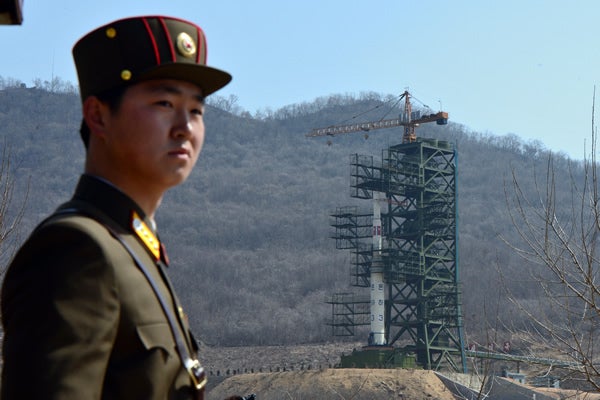North Korea never stops threatening its enemies.
The belligerent dictatorship routinely threatens to turn Seoul, the capital of South Korea, into a “sea of fire.” Recent videos have threatened America with nuclear annihilation.
Of course, after countless threats aren’t followed with action, the world wonders when to believe it.
The young leader Kim Jong-un is presiding over an administration, however, that shows a dangerous pattern.
Over the years, North Korea has repeatedly attacked allied military and civilian targets, including assassination attempts against the South Korean president, blowing up a civilian airliner, shooting down a U.S. Air Force plane, and seizing a U.S. Navy ship. This month, North Korea nullified the armistice ending the Korean War, moved artillery closer to the demilitarized zone, and warned South Koreans on border islands to evacuate.
All this suggests greater potential for another attack—perhaps imminent—on South Korean military and civilian targets. North Korea announced on Tuesday that it had put all of its artillery and rocket forces on the highest state of wartime alert, including those units “assigned to strike U.S. imperialist aggressor bases on the U.S. mainland and on Hawaii and Guam and other operational zones in the Pacific, as well as all enemy targets in South Korea.”
South Korean President Park Geun-hye has vowed to respond forcefully to the next North Korean attack—and Seoul should counter-strike the next time North Korea attacks. If there are no consequences, the north will continue its attacks.
Of course, a stronger response from South Korea could mean escalation, and the U.S. must be prepared to join its ally. In fact, we are committed. On March 22, Washington and Seoul signed a Combined Counter-Provocation Plan to counter North Korean tactical-level attacks. The plan provides for a “strong and decisive combined South Korean and U.S. response.”
But friends—and enemies—are questioning U.S. ability to deliver on its security promises.
North Korea’s threats prompted the Obama Administration to reverse some of its reductions in missile defense recently, but that is not nearly enough. The Administration’s reassurances that America can defend itself and its allies actually contradict the Deputy Secretary of Defense, who warned that sequestration would have devastating effects on U.S. defenses in the Pacific.
The Obama Administration’s much-heralded “pivot to Asia” has been rhetoric without resources. Claims of the U.S. being “back in Asia” were undermined by a budget-driven defense strategy that left the military shortchanged and U.S. credibility and resolve in doubt.
Defense needs should drive the defense budget. More of the defense cuts need to be reversed to ensure that American forces are capable of whatever is demanded of them.
North Korea may be blustering again, but we can’t take that chance. We have to be prepared for the day that it attacks.
LEARN MORE:
Increasing Risk of North Korean Tactical Attack on South Korea: What U.S. Needs to Do
Bruce Klingner, a Heritage senior research fellow, is the former chief of the CIA’s Korea Branch.
Read the Morning Bell and more en español every day at Heritage Libertad.
Quick Hits:
- Even liberals are criticizing CNN host Piers Morgan’s emotional outburst at Heritage scholar Ryan Anderson during Tuesday’s marriage debate. Mediaite columnist Noah Rothman said Anderson “has more courage than just about any pundit I can name.”
- Tennessee’s Republican governor said Wednesday his state would not expand Medicaid under Obamacare. The expansion would cost Tennessee taxpayers $1.2 billion through 2022.
- Federal employees who fail to show up for work or conduct union duties on government time are costing taxpayers millions in wasted hours, reports the Washington Guardian.
- As lawmakers prepare to tackle immigration reform, Congress should not adopt failed policies of the past, such as amnesty, writes Heritage’s David Addington.
- Have your health insurance premiums gone up? Call in to Istook Live! today and share your story. Call (800) 961-7808 and tune in from 9 a.m. to noon.
